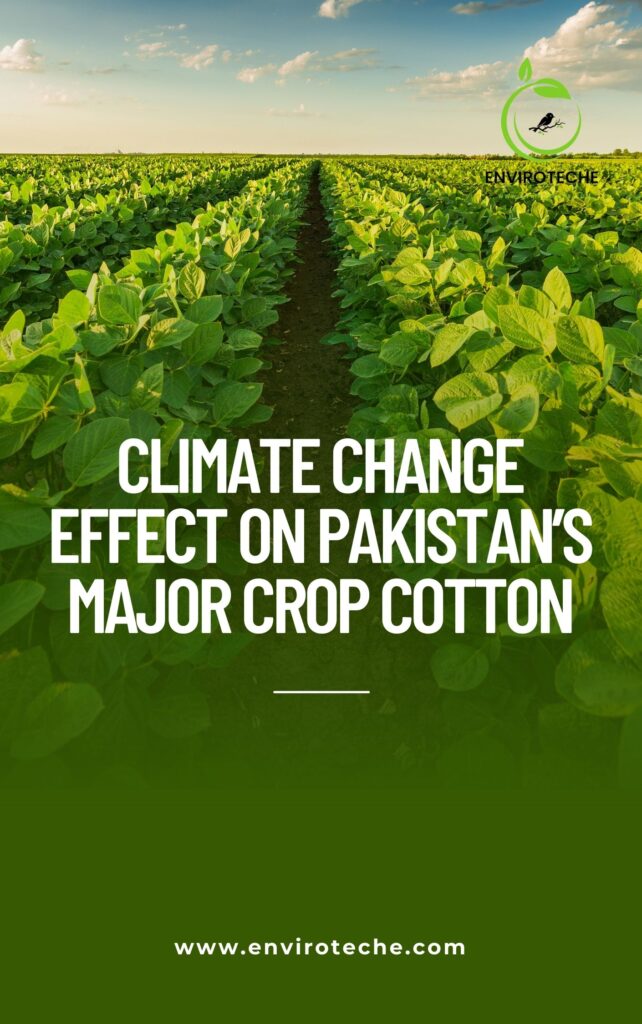Table of Contents

Cotton crop is a renewable resource that is woven into a wide variety of goods. Products including clothes, furniture, and medicine are included. It contributes roughly 2% to GDP and 8.2% to agricultural value added. Pakistan is one of the earliest places where cotton was cultivated, and today it ranks fourth in cotton production, third in raw cotton exports, and first in yarn exports.
Cotton crop is a cash crop for export and a source of raw materials for the domestic textile industry. There are over a thousand plants and more than four hundred textile mills that rely significantly on cotton. After wheat, cotton is Pakistan’s second most important crop, and it takes up more land in the country than any other crop.
The cotton crop is the country’s biggest export, and the seed of cotton used to make oil and meal make up 80 percent of the total oilseed produced in the country. Ten percent of the country’s GDP and fifty-five percent of its foreign exchange profits come from cotton and cotton-related items. This crop requires a lot of water, and just 6 percent can be used for irrigation purposes.
The water needs of a cotton plant are primarily environmental, as they are with all crops. More water is needed by plants in hotter and drier climates. Despite being regarded as a crop that requires a lot of water, cotton can survive in dry conditions and actually utilizes roughly the same amount of water as other key crops like millet, sorghum, etc. Cotton uses less water than other commodities (such as soybeans, which use 4% of global water consumption, maize, which uses 9%, wheat, which uses 12%, and rice, which uses 21%).
About 65% of Pakistan’s cotton is grown in the dry region of Punjab, while the remaining 35% is farmed in the more humid region of Sindh. Khyber Pakhtunkhwa and Baluchistan have very little land dedicated to cotton cultivation. In the first decade of this century, genetically engineered cotton (Bacillus thuringiensis) was introduced in Pakistan to reduce the negative impacts of lepidopterous insects on Pakistan’s cotton crop and, by extension, its economy. More than 95% of all cotton fields are now dedicated to growing genetically modified cotton.
Climate Change Effect on Cotton crop:
Climate change caused by global warming has had a big effect on farming not only in Pakistan but all over the world. There has been a sharp rise in temperature in the country, especially in the last few decades. The temperature is also expected to rise quickly in the near future. This rise in warmth will have a direct effect on the rate of evaporation and the amount of water that crops in the country need.
By 2060, the world temperature is expected to rise by 2.9°C to 5.5°C, which will cause a big drop in crop production. People expect that the bad effects of global warming on the farming sector will make poverty in rural areas worse. The effects of poverty are likely to be particularly severe in developing countries like Pakistan, where agriculture is an important way for most rural farmers to make a living.
In Pakistan, the cotton crop has had to deal with a number of problems, such as changes in the climate, changes in the weather, pests and diseases, and price changes. Temperature rises and changes in how often it rains affect how cotton grows and risk the long-term cultivation and quality of cotton in Pakistan. Cotton is at risk because global warming is causing temperatures to rise, droughts to last longer, and rain to fall in unpredictable ways. Extreme weather conditions are responsible for 50% of food yield losses around the world.
Punjab and Sindh have low regular rainfall and high temperatures, which make it hard to grow cotton. So, large changes in precipitation from the average number have a negative effect on cotton production. Millions of farmers and factory workers in Pakistan depend on the cotton economy for their income. Cotton is mostly grown in semiarid areas with little rain and high temperatures. It can handle high temperatures and water stress to some degree because of to its vertical tap roots.
History, on the other hand, shows that heat stress is a big problem for cotton production in many places, such as Pakistan, India, and Syria. Pakistan is in this group, and if temperatures keep going up, it could hurt its cotton business. So, it’s vital to their well-being to understand how temperature affects cotton. Most of the experts found that climate change and inefficient ways of operating cotton farms have made Pakistan’s cotton crop less productive.
Effects of Floods and Monsoon on Cotton Crop:
Pakistan’s cotton farming has been significantly impacted by climate change, notably with respect to floods and the monsoon season. Floods and monsoon have become more frequent and intense as temperatures have risen and weather patterns have become more unpredictable, posing considerable difficulties for cotton farmers. Waterlogging and soil erosion brought on by floods can harm cotton crops and restrict their growth.
The monsoon season’s excessive rainfall can cause water to stagnate, increase the prevalence of pests and illnesses, and delay planting or harvesting, all of which can have a detrimental effect on cotton production. Additionally, the typical monsoon patterns have been thrown off due to climate change, making it challenging for farmers to estimate the ideal dates for sowing and harvesting, thereby jeopardizing cotton production.
Mitigation Strategies:
Models of cotton crop growth and development under various environmental conditions are known as crop simulation models, crop growth models, or agricultural systems models. To figure out the direct and indirect effects of temperature on growth at the farm, regional, or higher levels, you need models that take into account how the different parts of the system work together
DSSAT: is a popular crop simulation tool. It can model the development and production of crops in response to varying climatic conditions and management strategies. In order to anticipate crop yield, DSSAT takes into account environmental and agricultural variables.
APSIM: Cotton crop simulation in Pakistan can also benefit from APSIM, another flexible crop simulation model. The impacts of climate change, such as changes in temperature and precipitation patterns, can be evaluated with APSIM.
CROPGRO: is a model for simulating the growth of crops like cotton. It considers the plant’s physiological reactions to environmental, agronomic, and managerial variables.
Conclusion:
In conclusion, the effects of climate change on Pakistan’s main crop, cotton crop are evident and profound. The cotton industry and the millions of farmers whose livelihoods depend on it can be protected by taking prompt action and giving mitigation and adaptation plans top priority. We can create a more sustainable future for cotton cultivation in Pakistan despite the obstacles posed by climate change by acknowledging the seriousness of this issue and tackling it proactively.
Author detail:
1Sehar Qaisar
1Department of Environmental Sciences, Government College University Faisalabad
Check Other Schlorships:
